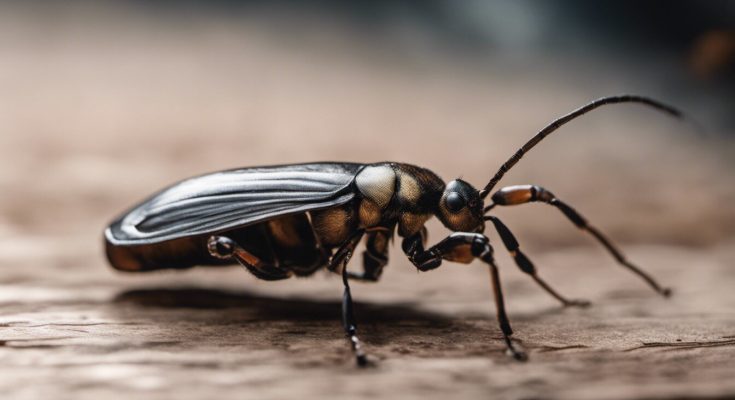Insects are often perceived as harmless creatures, but some are among the most dangerous animals on Earth.
Their impacts can be deadly, from spreading diseases to causing significant agricultural destruction.
Here are ten deadliest insects and their potentially fatal effects on humans.

1. Mosquitoes
Mosquitoes, particularly females from the Anopheles genus, are responsible for more human deaths annually than any other animal. According to the World Health Organization (WHO), they transmit lethal diseases like malaria, which claimed approximately 619,000 lives in 2021 alone. Research published in The Lancet highlights that mosquitoes are vectors for over 30 diseases, including dengue fever, Zika virus, and chikungunya, contributing to more than 700 million infections annually.
2. Tsetse Fly
The Tsetse fly is notorious for spreading sleeping sickness caused by the Trypanosoma parasite. A study in PLOS Neglected Tropical Diseases found that without treatment, sleeping sickness can lead to death in 1-2% of infected individuals annually. The disease’s symptoms include fever, severe headaches, and seizures, making the Tsetse fly a critical health concern in sub-Saharan Africa.
3. Fleas
Fleas are infamous for their role in transmitting the bubonic plague, which devastated Europe in the 14th century, killing over 25 million people. Research published in Emerging Infectious Diseases indicates that fleas are effective vectors for the Yersinia pestis bacterium, leading to outbreaks that can result in 90% mortality without treatment. Their use in biological warfare was documented during World War II, with reports of Japanese forces air-dropping plague-infected fleas on Chinese cities.
4. Kissing Bugs
Primarily found in the Americas, kissing bugs feed on vertebrate blood and transmit the Trypanosoma cruzi parasite, responsible for Chagas disease. According to the Centers for Disease Control and Prevention (CDC), Chagas disease infects around 6-7 million people worldwide and causes approximately 10,000 deaths annually. A study in The American Journal of Tropical Medicine and Hygiene noted that early detection and treatment are critical in preventing severe complications from this disease.
5. Bees and Wasps

Insects from the Hymenoptera order, including bees and wasps, cause numerous fatalities due to allergic reactions. A report by the National Health Service (NHS) in the UK states that about ten deaths are reported each year from bee or wasp stings, often due to anaphylaxis. Research indicates that severe allergic reactions can develop in 1-3% of the population, leading to life-threatening situations.
ALSO READ: Investment in agric will mitigate climate change — Expert
6. Asian Giant Hornet
Also known as the “murder hornet,” the Asian giant hornet threatens honey bee colonies and humans. A study published in Nature reported that these hornets can destroy entire colonies of bees, impacting local ecosystems. While their stings can be painful, they are more dangerous due to their ecological impact, as they eliminate worker bees and invade hives to consume larvae.
7. Fire Ants
Belonging to the genus Solenopsis, fire ants are aggressive and can be deadly to those allergic to their venom. The American College of Allergy, Asthma & Immunology estimates that fire ant stings lead to over 100 fatalities annually in the U.S. due to severe allergic reactions. Their painful stings can cause pustules and severe burning sensations, backed by numerous case reports in medical journals.
8. Assassin Caterpillars
Ranking as one of the deadliest caterpillars, assassin caterpillars possess venomous bristles that can inject anticoagulant venom when pierce the skin. Research published in The Journal of Venomous Animals and Toxins Including Tropical Diseases indicates that symptoms can include intense pain, vomiting, kidney failure, and internal bleeding, with fatalities occurring in rare cases.
9. Locusts
Technically, locusts are a type of grasshopper that can wreak havoc when they swarm. A study published in Nature Ecology & Evolution indicates that locust swarms can contain up to 80 million insects per square kilometer, devastating crops and leading to food insecurity in affected areas. The locust life cycle is influenced by environmental factors, which can trigger catastrophic swarming events.
10. Blister Beetles
Blister beetles produce cantharidin, a toxin that causes skin blistering. Research in Toxicon has shown that cantharidin can lead to serious health issues if ingested or improperly handled, including renal failure and gastrointestinal complications. Historically, it has been used in folk medicine, but its potential for harm underscores the dangers of these seemingly harmless insects.
These insects have significantly shaped human history, from facilitating life-threatening plagues to impacting agricultural practices. Understanding their dangers is crucial for mitigating their effects on public health and agriculture.







